
The 2010 United States Senate election in Arkansas took place on November 2, 2010, alongside other elections to the United States Senate in other states, as well as elections to the United States House of Representatives and various state and local elections.
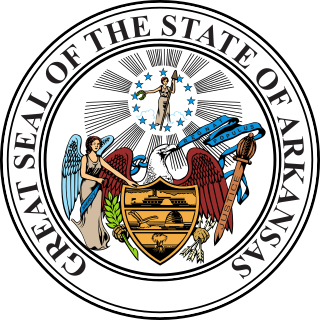
Arkansas's 2010 general elections were held November 2, 2010. Primaries were held May 18, 2010 and runoffs, if necessary, were held November 23, 2010. Arkansas elected seven constitutional officers, 17 of 35 state senate seats, all 100 house seats and 28 district prosecuting attorneys, and voted on one constitutional amendment and one referred question. Non-partisan judicial elections were held the same day as the party primaries for four Supreme Court justices, four appeals circuit court judges, and eight district court judges.

The 1836–37 United States Senate elections were held on various dates in various states. As these U.S. Senate elections were prior to the ratification of the Seventeenth Amendment in 1913, senators were chosen by state legislatures. Senators were elected over a wide range of time throughout 1836 and 1837, and a seat may have been filled months late or remained vacant due to legislative deadlock. In these elections, terms were up for the senators in Class 3.

The 2018 Arkansas gubernatorial election was held on November 6, 2018, to elect the governor of Arkansas, concurrently with elections to the United States Senate in other states, elections to the United States House of Representatives, and various state and local elections. Incumbent Republican governor Asa Hutchinson won re-election to a second term, winning by more than 33 percentage points and carrying all but seven counties, marking the largest winning margin of any Republican gubernatorial candidate in Arkansas history.

United States gubernatorial elections were held in 1926, in 33 states, concurrent with the House and Senate elections, on November 2, 1926. Elections took place on October 5 in Arkansas, and September 13 in Maine.

United States gubernatorial elections were held in 1924, in 36 states, concurrent with the House, Senate elections and presidential election, on November 4, 1924. Elections took place on October 7, 1924 in Arkansas, and September 8, 1924 in Maine.
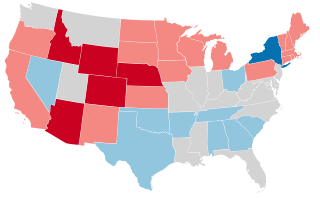
United States gubernatorial elections were held in 1918, in 32 states, concurrent with the House and Senate elections, on November 5, 1918. Elections took place on September 9 in Maine.

United States gubernatorial elections were held in 1916, in 36 states, concurrent with the House, Senate elections and presidential election, on November 7, 1916. Elections took place on September 11 in Maine.
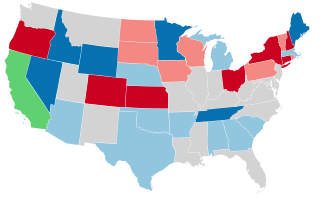
United States gubernatorial elections were held in 1914, in 31 states, concurrent with the House and Senate elections, on November 3, 1914.

United States gubernatorial elections were held in 1912, in 33 states, concurrent with the House, Senate elections and presidential election, on November 5, 1912. In addition, there was a special election in Georgia on January 10, 1912.

United States gubernatorial elections were held in 1906, in 28 states, concurrent with the House and Senate elections, on November 6, 1906.
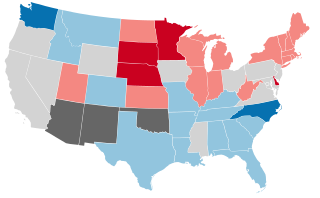
United States gubernatorial elections were held in 1900, in 34 states, concurrent with the House, Senate elections and presidential election, on November 6, 1900.

United States gubernatorial elections were held in 1896, in 32 states, concurrent with the House, Senate elections and presidential election, on November 3, 1896.

United States gubernatorial elections were held in 1894, in 28 states, concurrent with the House and Senate elections, on November 6, 1894.

United States gubernatorial elections were held in 1892, in 32 states, concurrent with the House, Senate elections and presidential election, on November 8, 1892.
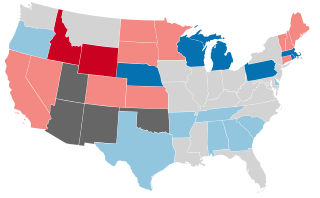
United States gubernatorial elections were held in 1890, in 27 states, concurrent with the House and Senate elections, on November 4, 1890.

United States gubernatorial elections were held in 1888, in 26 states, concurrent with the House, Senate elections and presidential election, on November 6, 1888.

The 1922 Arkansas gubernatorial election was held on October 3, 1922.

The 1898 Arkansas gubernatorial election was held on September 5, 1898. Incumbent Democratic Governor Daniel W. Jones defeated Republican nominee Henry F. Auten and Populist nominee W. Scott Morgan with 67.35% of the vote.



















